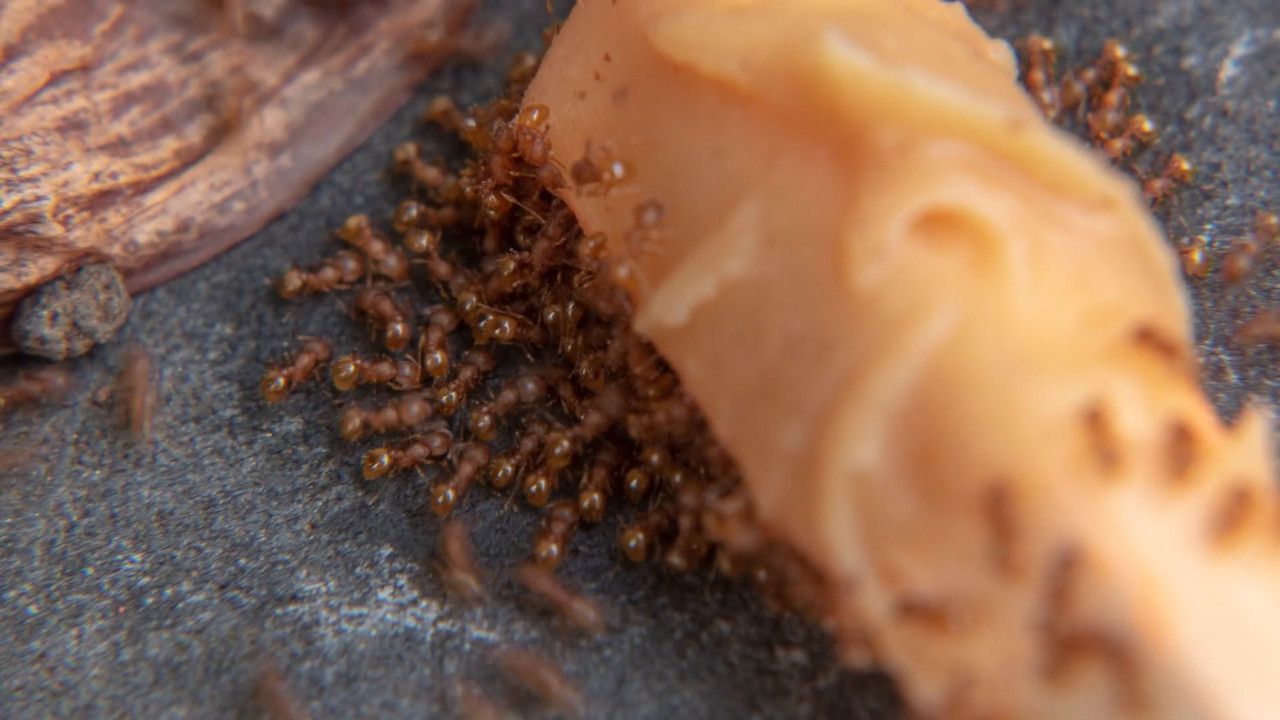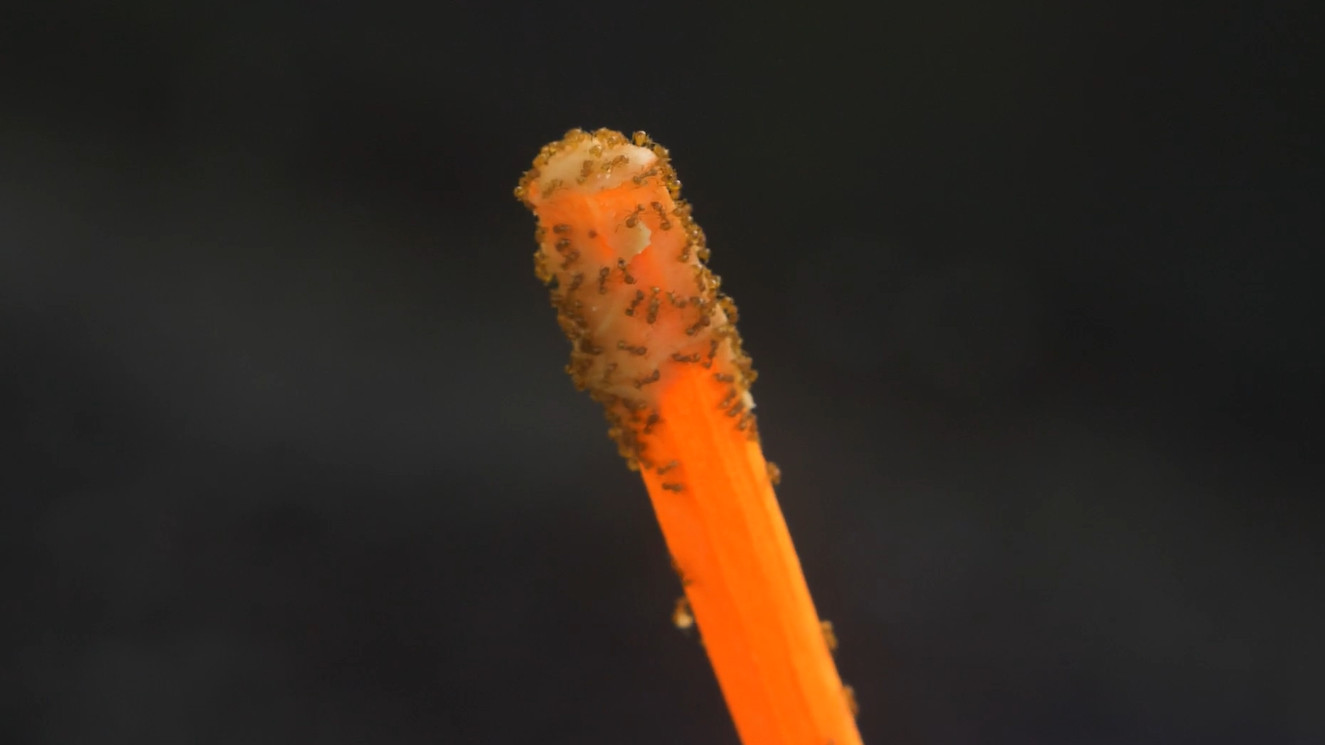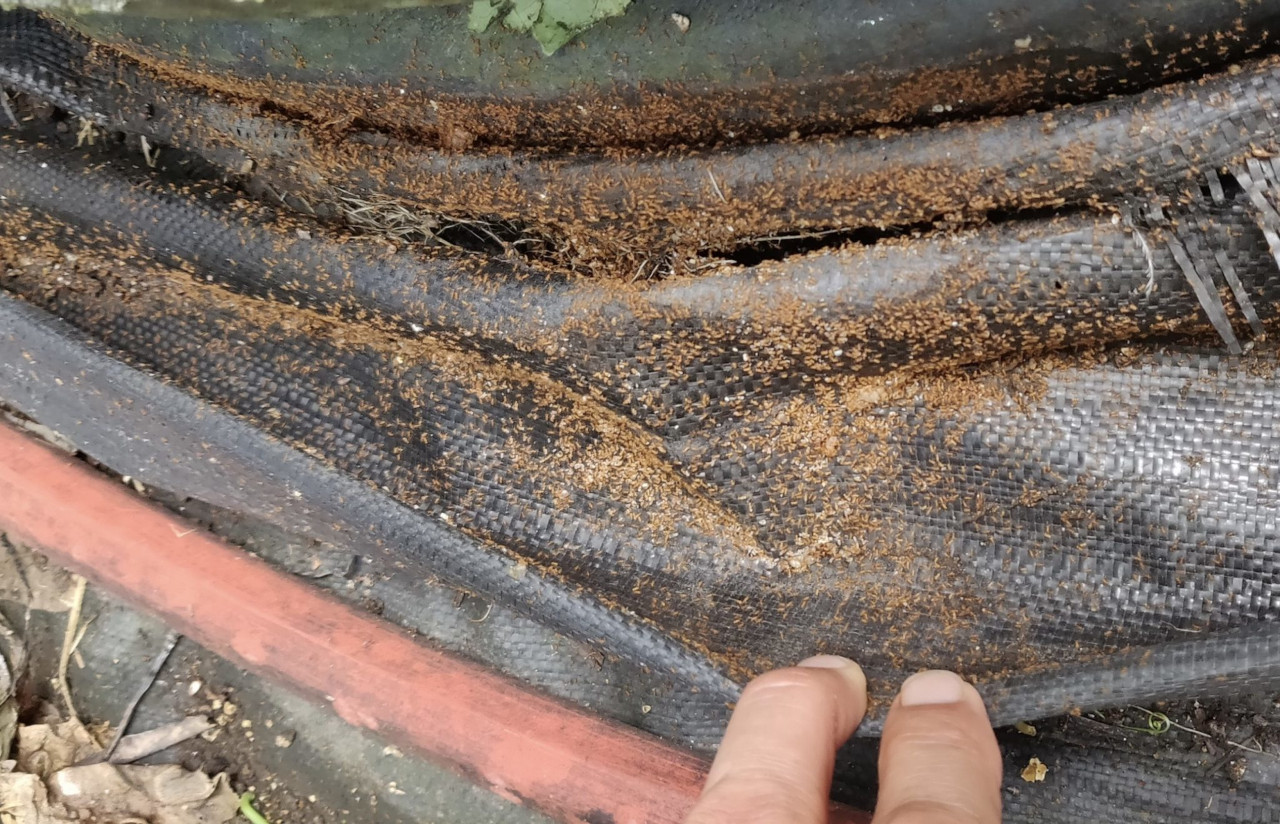Little Fire Ants in Hawaii: How to Collect a Sample (Hawaiʻi DLNR Forestry & Wildlife via Vimeo)
(BIVN) – October is “Stop the Ant Month” in Hawaiʻi, and residents are being encouraged to help stop the spread of the invasive pests.
The Hawaiʻi Department of Land and Natural Resources promoted “Stop the Ant Month” in a news release. The agency says residents should be on the lookout for little fire ants (LFA), and explained how they can collect and submit ants from their properties to help with detection.
From the Hawaiʻi DLNR:
The campaign is supported by the Hawaiʻi Invasive Species Council (HISC) and administered by the DLNR in cooperation with Hawaiʻi Department of Agriculture and University of Hawaiʻi programs, including the Hawaiʻi Ant Lab, Coordinating Group on Alien Pest Species, and the Invasive Species Committees on each island.
DLNR Chair Dawn Chang, who also co-chairs the interagency HISC, said, “Detecting and controlling invasive ants is one the most important things we can do for our natural areas, our outdoor lifestyle, and our local economy. This campaign by HISC and our partners helps us understand where these ants are, and we mahalo our residents for taking the time to collect and submit samples from their yards and businesses.”
LFA is considered among the world’s worst invasive species because they can form supercolonies consisting of millions of stinging ants. LFA stings are painful and can cause itchy red welts that last for weeks. Stings to pets’ eyes cause injuries that may result in blindness. Unlike the tropical fire ant, a ground-nesting ant that has been present since the 1800s and are commonly encountered at beach parks and dry, sunny areas, LFA are tiny ants, measuring 1/16 of an inch long, and orange in color. Stings tend to occur when the ants fall from trees or vegetation onto people, or when infestations become so large that the ants move into yards, homes and businesses.
Recent detections of new infestations on Kaua‘i, O‘ahu and Maui highlight the importance of resident reports in early detection of these ants. Infestations that are found early enough can be eradicated, and tools are available to suppress LFA even when local eradication is no longer possible. Controlling infestations prevents millions of dollars in impacts and perpetual costs for entire communities.
The Stop the Ant campaign also aims to find other, new invasive ant species that could impact Hawaiʻi, like the Red Imported Fire Ant (RIFA). RIFA are responsible for billions of dollars in agricultural and infrastructure losses and medical costs. Detecting and responding to new harmful ant species to minimize widespread long-term costs is a priority for the state. The risk is high because ants hitchhike on goods, such as in the high volume of goods from around the world that are imported to Hawai‘i.
Anyone can request a free ant-collection kit by visiting StopTheAnt.org, or can make their own using household supplies. A one-minute video, “How to Collect a Sample,” is available at the website and shows the step-by-step procedure for collecting ants from your property, freezing, then submitting them for identification.
Samples can be mailed or dropped off for identification at any of these locations:
- Oʻahu Invasive Species Committee: 808-266-7994, 743 ‘Ulukahiki Street, Kailua, HI 96734
- Maui Invasive Species Committee (also accepting samples from Lānaʻi), 808-573-6472, PO Box 983, Makawao, HI 96768
- Kauaʻi Invasive Species Committee, 808-821-1490, 7370K Kuamo‘o Road, Kapaʻa, HI 96746
- Moloka‘i Invasive Species Committee, 808-553-4236, P.O. Box 220, Kualapuʻu, HI 96757
- Big Island Invasive Species Committee, 808-933-3346, 23 East Kawili Street, Hilo, HI 96720
- Hawai‘i Ant Lab in Hilo, 808-315-5656, C/O Hawai‘i Department of Agriculture, 16 E. Lanikāula Street, Hilo, HI 96720
- Hawai‘i Ant Lab in Kona, 808-209-9014, c/o CTAHR Extension Office, 79-7381 Old Māmalahoa Hwy, Kealakekua, HI 96750




by Big Island Video News7:23 am
on at
STORY SUMMARY
HAWAIʻI - The Department of Land and Natural Resources says residents can help stop the spread of invasive pests like the FFA, or little fire ant.